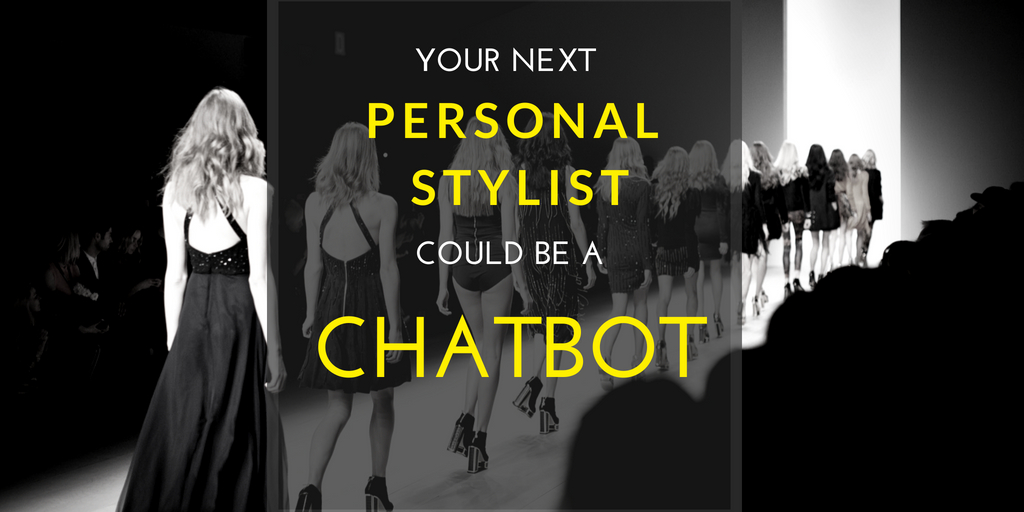Chatbots may soon be your personal stylist.
A recent report by MasterCard and Mercator research shows that 66% of US adults use voice assistants or chatbots, and 87% are aware of the technologies. With a growing demand for chatbots, fashion brands are introducing ways to keep the in-shop customers engaged offline too — in an organic manner that does not look automated.
With the advent of chatbots, fashion brands are racing to embrace virtual stylists, ensuring that shopping experience for customers goes beyond the usual traditional experience. So far, automation for the fashion industry has meant browsing through styles that relied heavily on previous search history that seemed mechanical.
But with artificial intelligence turning more and more sophisticated, fashion retailers are creating a ‘human-like’ and ‘realistic’ experience through conversational chatbots.
AI-powered chatbots are providing more accurate solutions and offering a far more personalized experience. Mixed with natural language processing and machine learning, the growing popularity of chatbots can be seen in platforms like Facebook Messenger, Skype, Slack, and Kik.
Conversational Chatbots — Tommy Hilfiger first introduced chatbots to the fashion experience in 2016 upon his partnership with supermodel Gigi Hadid. The chatbot in partnership with AI platform, msg.AI, replicates a conversational experience through automated messages. Interestingly the chatbot provides many options to pick from making shopping smooth and customized.
After asking a couple of questions, the chatbot can accurately predict what you will like. The options allow customers to browse through styles, enabling the chatbot to assist the shopper in selecting an outfit. At any point in the conversation, you are getting some navigation options — continue browsing, try a different style, see the video of a collection show.
The chatbot keeps you involved and lives up to the designer’s statement of “going directly to the consumer”. The chatbot can style an entire look based on the input provided by the user. If the customers understand what kind of look they want, then the chatbot can accurately put together a fresh Tommy Hilfiger look which includes shoes and accessories from the fashion brand.
Launched in 2016’s London Fashion Week, Burberry gave glimpses of behind the scenes. The retail chatbot slowly graduated to sending push notifications through its Facebook Messenger chatbot and even allowing fans to watch live runway shows. Chatbot adoption goes beyond fashion names like Burberry and Tommy Hilfiger. Estée Lauder partnered with №6 Mortimer to integrate the experience of in-store and online shopping. For UK, Estée Lauder launched a mobile service through its Facebook Messenger during Christmas season. The Messenger bot would smoothen the shopping process for customers shopping for Christmas gifts. A 60-min instant courier delivery across London made the deal look more appealing to many.
The retail industry is gradually picking up the scent of chatbot adoption and brands like H&M and Levis are allowing chatbots to recommend matching outfits or even pick up the perfect jeans.
Having said that, conversational chatbots are not the only way to go for fashion brands.
Chatbots powered by augmented reality is helping shoppers pick the perfect fit, color and even the right lipstick shade. Interestingly, retail brands are introducing innovative ways to the existing chatbots. This means teaming up with startups that are leading in augmented reality and other innovative tech ideas.
Augmented Reality-Powered Chatbot — Augmented reality, relies on advanced AI like face tracking and recognition so that products can be virtually applied to the real image.
In 2017, in partnership with ModiFace, Estée Lauder launched an augmented reality-powered chatbot so that customers can choose their lip shade by taking a simple quiz. The use of augmented reality allows users to see how the lip shade will look on them by performing “a unique search-by-color capability that allows shoppers to search for lipsticks by taking a photo of any object”. The experience is similar to the testing of sample lip shades — except in this case the customer is not in the store. Earlier in May 2017, Estée Lauder had launched another AR experience on their website which enabled customers to virtually try different shades of makeup.
Madison Reed is another example which allows customers to pick a perfect hair color through AR Chatbot. Madison Reed connects with its audience via its Facebook Messenger chatbot, Madi. After discussion of current hair conditions, Madi has the ability to identify hair color after the customer’s selfie gets uploaded. It then provides suggestions and different choices that suit the hair condition and the look of the customer.
But AR Chatbots in fashion brands remain at a nascent stage and are still being tried and tested.
Come to think of it … if introduced in full swing, it can make the shopping experience more smooth and less cumbersome. Augmented reality chatbots will allow users to try products without having to go through testing and sampling inside the stores.
Connect with the Author via LinkedIn or Twitter.
Originally Published via Chatbots Magazine
